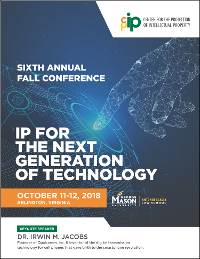 The Federal Trade Commission’s unfair competition case against Qualcomm, Inc., has now concluded. The parties gave their closing arguments on Tuesday, January 29, and all that remains is Judge Lucy Koh’s ruling. To prevail, the FTC needed to demonstrate actual, quantifiable harm. It completely failed to do so.
The Federal Trade Commission’s unfair competition case against Qualcomm, Inc., has now concluded. The parties gave their closing arguments on Tuesday, January 29, and all that remains is Judge Lucy Koh’s ruling. To prevail, the FTC needed to demonstrate actual, quantifiable harm. It completely failed to do so.
The FTC’s complaint charged Qualcomm with using anticompetitive tactics to maintain its alleged monopoly position as a supplier of certain baseband processors (chips that manage cellular communications in mobile products). Specifically, the FTC alleged that Qualcomm engaged in “exclusionary conduct” through a “no license, no chips” policy in which it supplied CDMA[1] and Premium LTE chips[2] only on the condition that cell phone manufacturers agreed to Qualcomm’s license terms. The FTC claimed that Qualcomm’s conduct reduced competitors’ ability and incentive to innovate and raised prices paid by consumers for cellular devices.
In support of this position, the FTC offered Carl Shapiro, an Economics Professor from Berkeley, as an expert witness. Shapiro argued that Qualcomm’s “no license, no chips” policy gave it the market power to demand “supra-FRAND”[3] royalties. He claimed these royalties harmed competition by raising rivals’ costs, weakening them as competitors, and deterring them from doing R&D. Shapiro asserted that Qualcomm had monopoly power over CDMA and Premium LTE markets through 2016.
There are (at least) two glaring errors regarding the FTC’s and Shapiro’s arguments. First, the relevant market definitions for “CDMA” and “Premium LTE” chips are fatally flawed. Regarding CDMA, the FTC defined the relevant market solely as CDMA chips, yet the market includes both CDMA and WCDMA[4] chips, with WCDMA selling 5x more chips than CDMA. Regarding Premium LTE, there is no “premium” chip market separate from other mobile chips. What the FTC and Shapiro define as “premium” actually represents the end-result of a normal product evolution where newer, more innovative chips are incorporated first into higher-end devices. And even if one considers only Premium LTE chips, Qualcomm had a first-mover advantage because it invented the technology. A first-mover advantage is not an antitrust violation. The result of both flawed market definitions is an economic theoretical shell-game to divert attention from the fact that there is simply no evidence of harm to the properly defined actual market.[5]
And this leads to the second and even more critical point: the FTC presented no real-world evidence of harm to competitors or consumers from Qualcomm’s alleged exclusionary conduct. If R&D had been deterred by Qualcomm’s licensing practices, as Shapiro argued, he should have been able to identify at least one actual example.[6] Under his theory, the lack of ongoing R&D and harm to competitors should have resulted in an increasing number of inferior cell phones provided by a decreasing number of companies. To the contrary, more and more competitors have been entering the chip market with more and more innovations as cellular technology has advanced from 3G to 4G. Cell phone quality has dramatically increased over time, without concomitant quality-adjusted price increases.[7]
Notwithstanding the flawed market definition and lack of harm, the FTC has misconstrued the underlying basis for Qualcomm’s “no license, no chips” licensing policy, teeing it up as objectively anticompetitive and onerous. Yet, Qualcomm’s policy simply seeks to prevent “patent holdout” as a legitimate business strategy. Without this policy, device manufacturers could build phones using Qualcomm’s chips, then simply refuse to pay Qualcomm for its telecommunications patents. Qualcomm’s only recourse would be to sue for patent infringement, while the device manufacturers continue to profit from use of the chips. The “no-license, no chips” policy ensures that device manufacturers negotiate necessary patent licenses before receiving chips to build phones.
Assistant Attorney General for the Department of Justice, Makan Delrahim, has stated that condemning this kind of licensing practice, in isolation, as an antitrust violation, while ignoring equal incentives for patent holdout, “risks creating ‘false positive’ errors of over-enforcement that would discourage valuable innovation.” (Delrahim also recently criticized the FTC’s entire case saying that disputes about patent licensing should not be decided by antitrust law.)
The FTC, its experts, and its industry witnesses, however, are basically advocating for patent holdout as a legally legitimate, even preferable, strategy for dealing with patent owners like Qualcomm. Professor Shapiro’s model, in particular, advanced patent holdout in lieu of up-front patent licensing. Shapiro would require a patent owner to wait and then sue for infringement as a prerequisite to any license negotiations. But forcing the patent owner to pursue judicial recourse through a time-consuming and costly patent infringement suit leverages the cost of litigation to artificially decrease the ultimate reward to the patentee.
At the close of this case, one is left wondering why. Why did the FTC pursue a “midnight” filing at the tail end of the Obama Administration, just days before President Trump took office? Why did the FTC pursue the case over Commissioner Ohlhausen’s strong dissent in which she argued that the case was based on a flawed legal theory “that lacks economic and evidentiary support” and that “by its mere issuance, will undermine U.S. intellectual property rights in Asia and worldwide”? And finally, why is the FTC attempting to cripple Qualcomm in the developing 5G technological space in favor of China’s Huawei[8], which will result in actual, quantifiable harm to the U.S.’s competitive advantage over China?
[1] CDMA, which stands for “code-division multiple access,” permits several transmitters to send information over a single communication channel and is a second generation (2G) network used in mobile device.
[2] LTE, which stands for “long term evolution,” is a fourth generation (4G) standard for high-speed wireless communication used in mobile devices.
[3] FRAND stands for “fair, reasonable, and non-discriminatory.”
[4] WCDMA stands for “wide band code division multiple access.” It is a third generation (3G) network used in mobile devices.
[5] This is the same game the FTC played in the 1990s with Microsoft where the FTC defined the relevant market as operating systems for IBM compatible PCs, but that argument only worked if one excluded Apple, Linux, and other operating systems. These type of games about defining the relevant market are common in the high-tech context, and the FTC is repeating it here.
[7] “Several empirical studies demonstrate that the observed pattern in high-tech industries, especially in the smartphone industry, is one of constant lower quality-adjusted prices, increased entry and competition, and higher performance standards.” See: https://cip2.gmu.edu/wp-content/uploads/sites/31/2018/02/Letter-to-DOJ-Supporting-Evidence-Based-Approach-to-Antitrust-Enforcement-of-IP.pdf.
[8] One also wonders why the FTC relied so heavily on Huawei’s testimony in this case given the Trump Administration’s repeated concerns about this company culminating in the Department of Justice’s recent 10-count indictment against Huawei for theft of trade secrets, wire fraud, and obstruction of justice.
 By
By